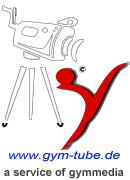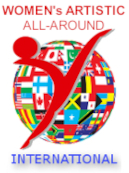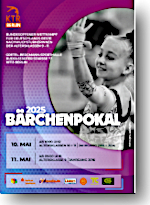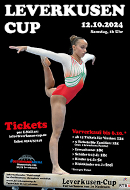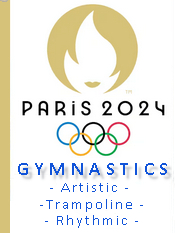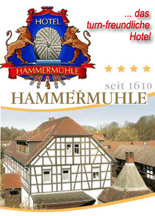Deutsch Englisch
19. Juni 2009
Montreal, Kanada
Artistic Gymnastics
Cirque du Soleil celebrates 25th Birthday with a twist
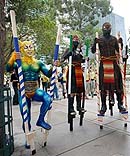 |
The Canadian company "Cirque du Soleil" that made it respectable to run away with the circus staged an extravaganza outside its Montreal headquarters this week:
About 900 stilt walkers from dozens of countries are to gather to celebrate an entertainment behemoth's 25th anniversary.
These days, the Cirque du Soleil is a cultural juggernaut and Canadian business marvel whose founder, Guy Laliberté, is so rich he just bought himself a $35-million (U.S.) ticket into space.
About 900 stilt walkers from dozens of countries are to gather to celebrate an entertainment behemoth's 25th anniversary.
These days, the Cirque du Soleil is a cultural juggernaut and Canadian business marvel whose founder, Guy Laliberté, is so rich he just bought himself a $35-million (U.S.) ticket into space.

The 'Cirque' at his last guest performance 2008 in Berlin
... with the Show 'VAREKAI' - upcomming in Hamburg, Germany, again
A quarter century on, the Cirque has performed in 271 cities in 32 countries, employs 4,400 people from 40 different nationalities, and expects 15 million people to see its shows this year from Montreal to Las Vegas and Nagoya, Japan.
Fuelling the success was the visionary ability to redefine the circus. Out went the animals, in came the high-end artistry.
“The Cirque really changed the popular perception of circuses and created standards that others have tried to live up to,” said Ernest Albrecht, author of books The New American Circus and The Contemporary Circus . “The circus used to be seen as somewhat tawdry. Now we see it as an art form rather than a bunch of gypsies travelling around in a caravan.”
The Cirque has also turned Quebec into circus-arts capital of North America and inspired a generation of youngsters to view swinging from a trapeze as a viable career choice. Quebec has about 60 circus troupes, from the Cirque to seasonal outfits that snag contracts to do street shows, and scores of high schools offering circus training to aspiring jugglers and contortionists.
The National Circus School in Montreal, which trains professional circus artists, graduated 21 performers this year from places such as the United States, Spain, Italy, as well as Canada.
A lot of former top stars of artistic, rhythmic, trampoline acrobatic or wheel gymnastics started a second career under the roof of the world famoust cirque - so for instance the former German gymnast Toni MEVIUS from Berlin or the former Hungarian Vice world champion on high bar Zoltan SUPOLA.
Fuelling the success was the visionary ability to redefine the circus. Out went the animals, in came the high-end artistry.
“The Cirque really changed the popular perception of circuses and created standards that others have tried to live up to,” said Ernest Albrecht, author of books The New American Circus and The Contemporary Circus . “The circus used to be seen as somewhat tawdry. Now we see it as an art form rather than a bunch of gypsies travelling around in a caravan.”
The Cirque has also turned Quebec into circus-arts capital of North America and inspired a generation of youngsters to view swinging from a trapeze as a viable career choice. Quebec has about 60 circus troupes, from the Cirque to seasonal outfits that snag contracts to do street shows, and scores of high schools offering circus training to aspiring jugglers and contortionists.
The National Circus School in Montreal, which trains professional circus artists, graduated 21 performers this year from places such as the United States, Spain, Italy, as well as Canada.
A lot of former top stars of artistic, rhythmic, trampoline acrobatic or wheel gymnastics started a second career under the roof of the world famoust cirque - so for instance the former German gymnast Toni MEVIUS from Berlin or the former Hungarian Vice world champion on high bar Zoltan SUPOLA.
 |
Longtime partnership with GYMmedia
Almost the last century the European Gymnastic Service GYMmedia INTERNATIONAL and specially the Casting Bureau of Cirque du Soleil are working together in a efficiently manner.
So GYMmedia helped to organize some of the European auditions
and supports to find new top canditates for upcumming new projects of the cirque to advantage for both sidesund arbeitet per Jahresvertrag im Internet mit dem kanadischen Weltunternehmen zum gegenseitigen Vorteil zusammen.
(* ... look at the > Cirque Banner ad , rightmost on the top)
* GYMmedia INTERNATIONAL
Almost the last century the European Gymnastic Service GYMmedia INTERNATIONAL and specially the Casting Bureau of Cirque du Soleil are working together in a efficiently manner.
So GYMmedia helped to organize some of the European auditions
and supports to find new top canditates for upcumming new projects of the cirque to advantage for both sidesund arbeitet per Jahresvertrag im Internet mit dem kanadischen Weltunternehmen zum gegenseitigen Vorteil zusammen.
(* ... look at the > Cirque Banner ad , rightmost on the top)
* GYMmedia INTERNATIONAL


